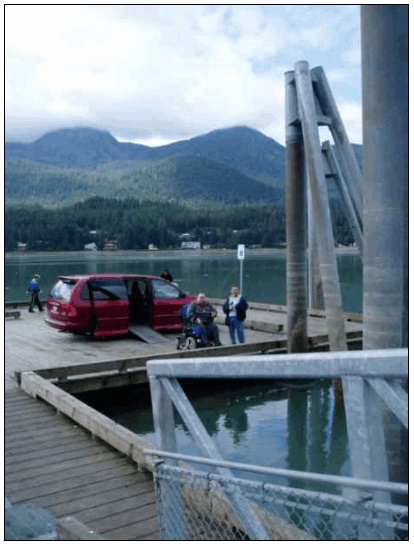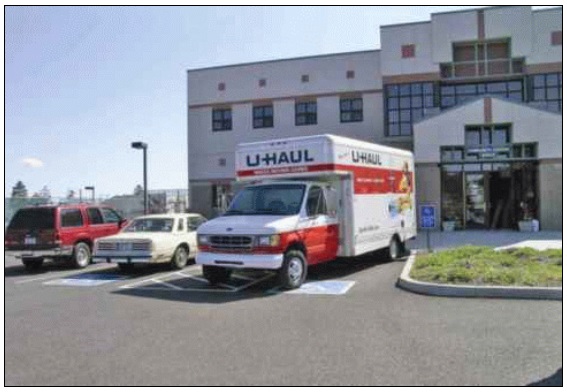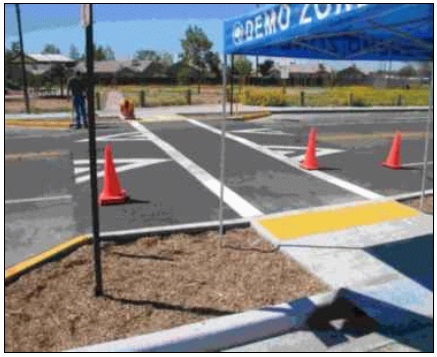Common Problems with Access to Programs, Generally
Ø Perhaps the most common form of discrimination faced by people with disabilities is when others assume that they will not be able to, or want to, participate in civic programs and activities, and build facilities or design programs without thinking through the accessibility obstacles that may arise.
Ø Employment and volunteer opportunities may be limited by others' assumptions about the talents, abilities, and interests of persons with disabilities.
-
When designing your facilities, programs, services, and activities, assume that people with disabilities can and will want to use them just as much as others.

This city has extreme tidal changes. At high tide, the pedestrian walkway leading to this fishing platform is almost level; at low tide, it is very steep. Realizing that it would be difficult to keep the slope of the pedestrian walkway gentle enough to be usable by people with disabilities, the city reinforced the walkway and moved its accessible parking out to the fishing platform. Now, people with disabilities drive down the walkway and transfer in and out of their vehicles on the fishing platform. The floating platform is always level, regardless of tide.
-
Recognize that rules, policies, and procedures that apply to the public as a whole can create barriers to participation by persons with disabilities.
-
Upon request, you should grant reasonable modifications to your rules, policies, and procedures when necessary to ensure equal access and participation for people with disabilities. You are not required to take actions that would fundamentally alter the nature of a program, service, or activity.
-
Maintain the accessibility of the features you are providing through regular maintenance, testing, and appropriate policies.

The only available accessible parking space is being used as a delivery area, so no additional spaces are available to visitors with disabilities.
Accessibility is often overlooked in programs such as voting, emergency planning, and sidewalks.
Emergency planning:
-
Survey your emergency shelters for accessibility.
-
Make sure that policies are in place so persons with disabilities are not separated from service animals, even if pets are not allowed in shelters.
-
Ensure that at least one shelter in your community has a back-up generator and a way to keep medications cool; inform the community about the location of this shelter.
Voting:
-
Consider the accessibility of voting machines to persons who have mobility impairments as well as those who are blind when acquiring new machines. See "ADA Checklist for Polling Places" (Sidewalks:
-
When constructing or altering sidewalks or streets, add curb cuts at all intersections. Filling potholes is not an "alteration" that triggers ADA obligations, but milling and repaving are considered alterations.
-
When setting priorities for increasing access to existing sidewalks, solicit input from people with disabilities regarding where curb cuts and other improvements are most needed.
-

A city provides access to its sidewalks for persons with disabilities, while also adding a raised paved area as a "traffic calming" measure.

User Comments/Questions
Add Comment/Question